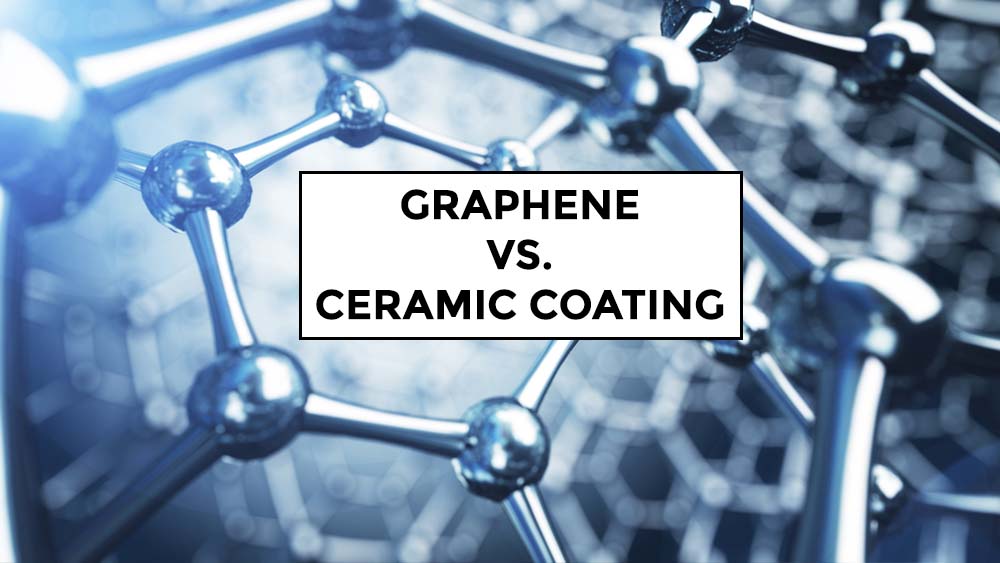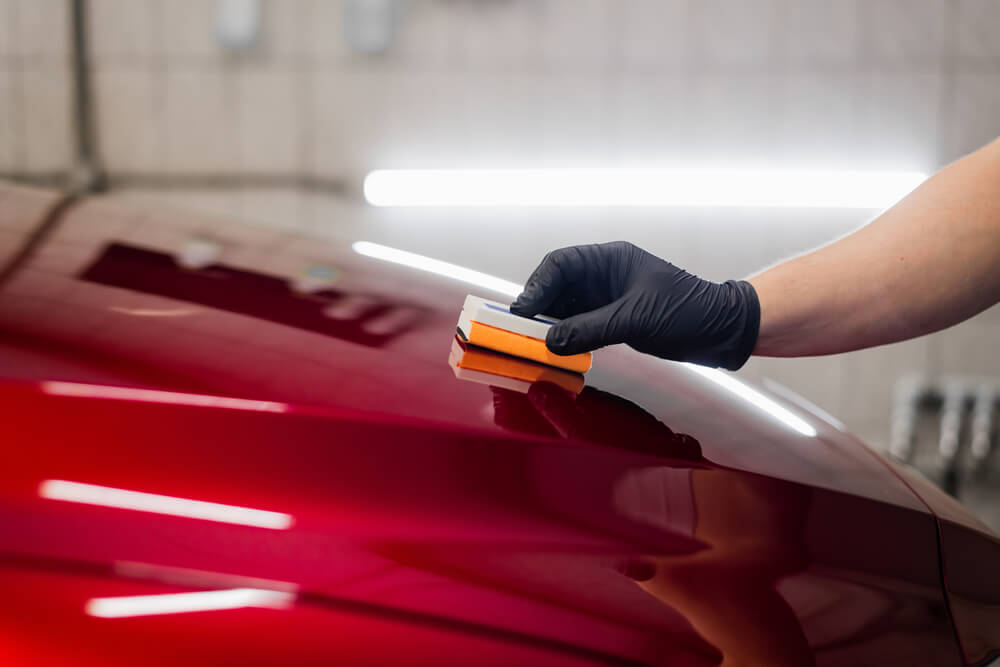
Is Graphene Coating Better Than Ceramic Coating?
What is the best method of paint protection? Is graphene coating better than ceramic coating? And which one offers more protection at a high water contact angle?
Your car’s paint job is subjected to tons of weathering every day that can cause problems like scratches, dullness, rusting or corrosion. It’s no surprise that many of us look for the best product on the market to protect our cars.
Until recent years, car care products like ceramic-infused coatings, waxes, sealants, clay bars, or spray coatings were exclusively offered by professionals as premium add-ons to services performed in detailing shops. Today they are widely available to all vehicle owners, and can be found both online and in stores at accessible prices. But with hundreds of products on the market from nearly every major car care brand, and all of them promising to make your vehicle look as good as it did the day you bought it, how do you know what are the differences between them? And how do you know who to trust?
To help you make an informed buying decision, in this post we’ll tell you all you need to know about graphene vs. ceramic, and which coatings on the market to trust with your car.
What Is Graphene Ceramic Coating?
Graphene coatings are the latest technology hype on the automotive market, witnessing a growing popularity in many detailing circles. But let’s see what the buzz is all about.
Recommended as the strongest material in the world, graphene is said to have an abundance of beneficial properties. Designed to help reduce water spots and protect against corrosion, it has anti-static and hydrophobic properties, and offers a nice gloss.
But is graphene a ceramic?
Graphene is considered to be an improved form of ceramic coating. Compared to traditional ceramic products, graphene is said to come with a few extra benefits, which include:
- Enhanced slickness
- Higher abrasion resistance
- Glossier aesthetic
- Longer durability
- Less water spotting
While I don’t necessarily agree that graphene is better than ceramic (especially when you’re a regular user of Nexgen Ceramic spray like I am and have seen incredible results with it) there is one graphene product which I particularly like. And that’s the SPS Graphene Coating.
Although their product is not widely available yet, SPS are priding themselves with having created one of the most advanced protective coatings in the industry. I have been using a bottle of their product for a few months now, and I can definitely say that it’s as good as they advertise it to be. What I appreciate the most about it is how easy it is to apply, its slickness, sharp gloss, and very good hydrophobic and self-cleaning characteristics. And from what I’ve noticed, hard water spotting and bird droppings come off with ease, without damaging the coating or substrate.
How Long Does Graphene Coating Last?
Although graphene is advertised as having a longer durability than traditional ceramic, my personal opinion is that they are quite similar in terms of resistance. High quality ceramic coatings can be extremely durable and can last for multiple weeks, even months. And that’s pretty much what you’ll get from graphene too.
Overall, if you are curious to try the latest development in terms of detailing and car protection, I recommend you give SLS Graphene Coating a try.

What Is Traditional Ceramic Coating?
Although considered to be the older detailing generation when compared to graphene coatings, ceramic coating is still full of benefits that make it well worth considering as an option.
So in case you are wondering whether ceramic coatings work, they absolutely do!
If you have been following my reviews, you might know by now that my favorite ceramic detailing product is Nexgen Ceramic Spray. I also like Torque Detail, but Nexgen is still number one for me. With 13% silicon dioxide, along with other additives in the mixture, Nexgen works up to 4x longer than other ceramic spray products on the market, it’s easier to apply, and works wonders. Also, thanks to its chemical structure, it provides significantly better protection than a graphene car coating when it comes to protecting the paint against fading from the sun’s rays.
Compared to traditional waxes and sealants, it makes your car less prone to water beading formation thanks to its nanotechnology that allows the product to bond to your paint, wheels, glass, and trim at a molecular level. It fills in microscopic pits and grooves in your paint, leaving a hydrophobic surface that is so smooth that it actually feels “slick” to the touch. What ceramic coatings cannot do though is protect the paint against hard scratches. It also does not help prevent water spots, which graphene does very well.
Final Thoughts On Graphene vs. Ceramic
Is graphene better than ceramic coating? Not necessarily, but in the end it depends on what products you choose to use, and what expectations you have from each one of them.
Will these two detailing products benefit your vehicle and add value?
Certainly!
Are graphene or ceramic coatings a one-stop-shop solution for your car?
No, but it’s a great start.
If you care about preserving the look and quality of your car, check out more on our blog and find out how we compare products. We have so much more information to share with you, and we want to help you make the right decision for you and your car for the long run.



